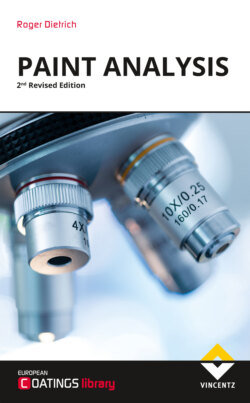Читать книгу Paint Analysis - Roger Dietrich - Страница 37
На сайте Литреса книга снята с продажи.
3.4.3Abrasive sampling
ОглавлениеAs already mentioned, sampling of big and precious objects is a very delicate matter. On the one hand you might wish to have as much sample as possible for a comprehensive evaluation of the issue. A destructive sampling is inevitable:
if, for example, the question is how many coatings have been applied, or
the task is to measure the thickness of each layer of a multilayer system consisting of a few layers of spatula und coatings
But on the other hand, the owner would not be pleased, if you cut out a 2x2 cm piece of the object.
If it comes to solid precipitations, discolorations, hazing and gloss deficiencies, the design of experiment of the analytical approach focusses on the topmost layers of the coating. To meet the demand of sampling and analysis with minimum impact on the product a minimum destructive sampling has been developed. It is an analysis technique that allows for sampling of the uppermost microns of the coating surface and analysing the sample without any further preparation by infrared spectroscopy.
The sampling procedure is performed by a special abrasive paper which is slightly rubbed over the area that has to be investigated. A very low amount of material sticks to the paper and the specimen will be transferred to the lab for the spectroscopic analysis. Of course, this manipulation leaves a visible trace. The sampled area appears a little bit matt after the procedure but can easily be polished leaving no trace of the sampling afterwards, because the amount of material taken off the sample surface is very low but sufficient for trace analyses. Of course, this method has to be performed by experienced persons and the impact has to be checked for each individual object. The amount of sampled material on the hand side and on the other hand the influence on the appearance of the coating depends on the pressure applied during the procedure and the hardness of the coating. This sampling has to be done very carefully.
Figure II.15: The principle and impact of (quasi) non-destructive rub sampling of coatings
a) High gloss coating before sampling; b) High diffuse reflectivity abrasive sampling paper
c) High gloss coating after sampling; d) and after re-polishing of the sampling area
The rub sample will be analysed by infrared reflection spectroscopy (DRIFT) making use of a specially designed objective and/or by mass spectrometry (TOF-SIMS).
Figure II.16: DRIFT spectrum (Kubelka-Munk) of the abrasive sampled coating showing a typical aliphatic polyester polyurethane spectrum
